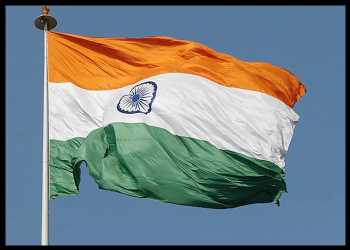India Wholesale Price Inflation Sinks Deeper Into Negative Territory

India’s wholesale price inflation was negative for a second month in a row and prices decreased more than expected from a year ago, suggesting that inflationary pressures are set to ease in the months ahead and give more space for the central bank to maintain a pause in the monetary policy tightening.
The wholesale price index, or WPI, declined 3.48 percent year-on-year following a 0.92 percent fall in April, data from the commerce ministry revealed Wednesday. Economists had forecast a 2.35 percent decrease.
The downward trend in May was primarily attributed to the fall in prices of mineral oils, basic metals, food products, textiles, non-food articles, crude petroleum and natural gas, and chemical and chemical products, the ministry said.
Food prices were 1.9 percent lower compared to last year, reversing a 0.2 percent rise a month ago. Prices for fuel and power also had a considerable impact on overall inflation, falling sharply by 9.2 percent.
Data showed that the yearly decline in manufactured products was 2.97 percent, and costs for primary articles slid by 1.8 percent.
On a monthly basis, wholesale prices dropped 0.9 percent versus a 0.1 percent fall in April.
Data released earlier this week showed that India’s consumer price inflation eased to a 25-month low of 4.25 percent in May.
Moreover, inflation returned within the Reserve Bank of India’s tolerance band of 2-6 percent for the third straight month and moved closer to the medium-term target of 4.0 percent.
At its latest meeting held on June 8, the Monetary Policy Committee of the RBI lowered the CPI inflation projection for 2023-24 to 5.1 percent from 5.2 percent.
“The RBI’s tightening cycle has come to an end and, as the economy comes off the boil and inflation settles at comfortable rates, we think interest rates cuts will materialise in early 2024,” Shilan Shah, a chief economist at Capital Economics, said after the release of the consumer price inflation data.
ING economist Robert Carnell expects a 50 basis points rate cut by the end of the fourth quarter of this year.
The RBI adopting a neutral stance on policy at its next meeting on August 10 could be seen as a first step towards actual easing, the economist said.
At 6.5 percent, the gap between the policy repo rate and current inflation is high, and that means that the RBI’s tightening should be having the desired dampening effect on the economy and inflation, Carnell pointed out.
“Rate cuts this year would be more likely if we were to see concrete signs that monthly inflation had eased, core rates continued to fall, or that the economy was showing some more obvious signs of a slowdown,” the economist added.
Source: Read Full Article
